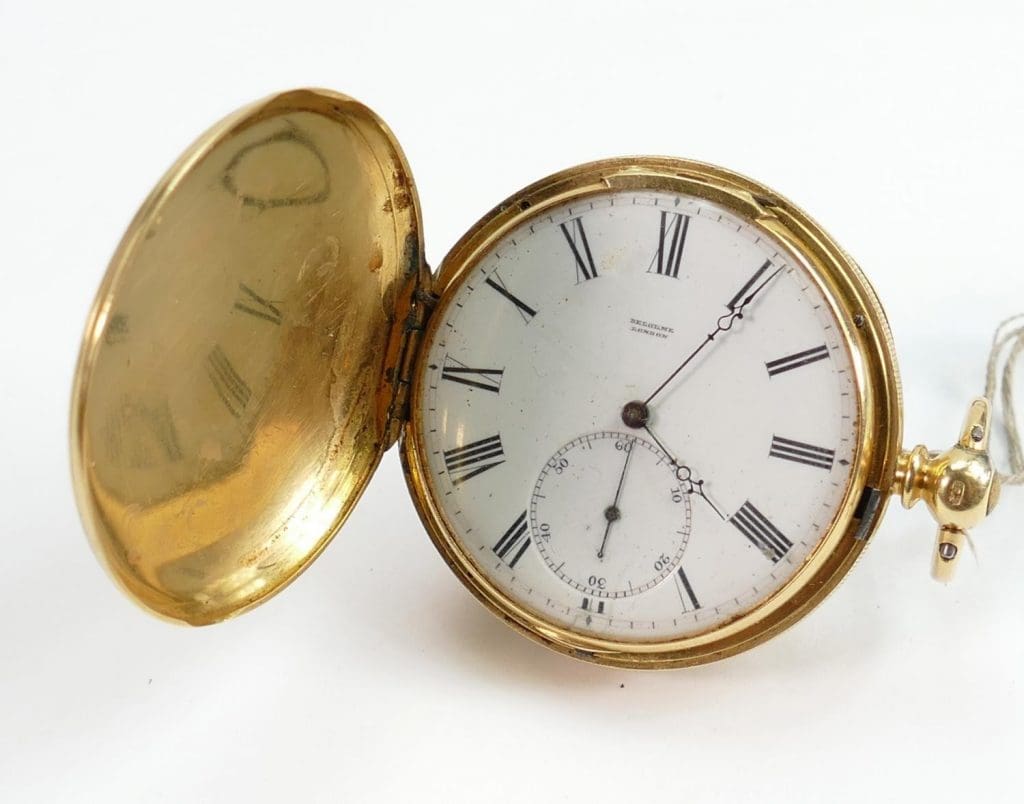
Sold in our 2022 July Fine Art auction, this 18ct gold Delolme London gents full hunter pocket watch achieved a hammer price of £900.
The pocket watch is the epitome of the quality timepiece, with connotations of class and distinction. With a multitude of different styles and types, they can be a very personal item and a symbol of status. But what is their history and how well do pocket watches sell at auction?
Pocket watches have been around for a surprising length of time, with origins dating back over 500 years. In that time, they have evolved enormously in style and timekeeping precision, becoming established as a symbol of style and status.
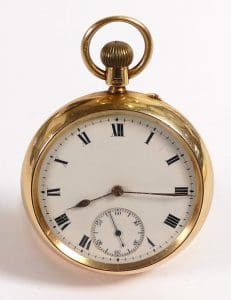
This 18ct gold double cased top winding pocket watch, dated London 1917, sold in our March Fine Art auction for £1600.
The characteristic timepiece we recognise today owes its lineage to the clock-watches of the 16th-century. Originally larger and cylindrical or spherical in shape, these early clock-watches were worn as a pendant or attached to clothing. They usually required winding twice a day and were horrendously inaccurate, prone to changing speed as the spring unwound – so much so that they were functionally useless as proper timekeeping devices. Thus, they served as little more than objects of jewellery and were especially ornate. Nevertheless, watch movements of this period often featured chiming or alarm mechanisms.

Believed to be the oldest watch in the world, this pomander watch dates from 1505 and is attributed to Nuremberg watch maker Peter Henlein.
These early watches originated in Nuremberg as improvements to the torsion pendulum and coil spring mechanism allowed for the manufacture of more compact timepieces. Of particularly attractive design was the spherical pomander watch, so named for its resemblance to the fragrance carriers of the period. At this time, the poor accuracy was such that the face would only feature an hour hand.
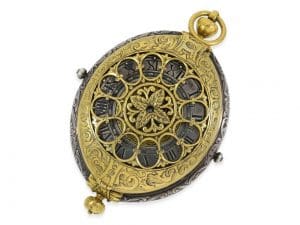
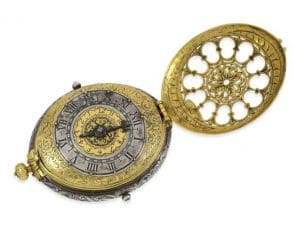
A stunning example of a “Nuremberg Egg” watch from around 1580, constructed featuring an alarm/striking mechanism. Of exceptional quality and condition for its age, it sold at auction in Germany in September 2019 for €17,500!
Due to an apparent corruption of the word ‘euerlein’ (little clock) to ‘eierlein’ (little egg), the 1580s saw the rise in popularity of oval shaped watches that became known as Nuremberg Eggs. Surviving examples from this time are enormously valuable, thanks to their rarity and their fabulously ornate decoration and craftsmanship: as such, on occasions when they appear at auction, their prices can soar into the tens of thousands of pounds.
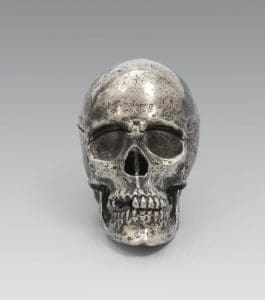
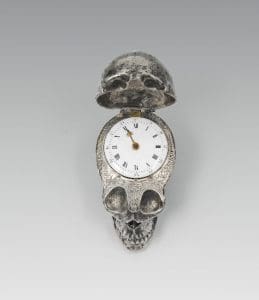
A great example of a memento mori watch, this silver piece from the mid-to-late 1700s sold for €6,000 at auction in Austria in June 2022.
Towards the end of the 16th-century, clock-watches were being produced in a variety of novelty shapes, including in the form of books, animals, insects, fruit, flowers, stars and crosses. One such type was the memento mori watch, which was fashioned in the shape of a human skull. Rather macabre in design, the intention was to remind their owner of their own mortality and that time waits for no one. Watches of this type were produced through the 17th/18th-century, with some examples also produced in the 1800s.

This rare silver and tortoiseshell pair cased verge pocket watch with sun and moon dial by Joseph Windmills, dated London circa 1690, sold for £4,113 at auction with Christies in 2002.
The true pocket watch was eventually born in 1675, with the introduction of the waistcoat by Charles II of England. The enclosure of the dial with glass had already begun around 1610, and the shape and size of watches then evolved to fit in the waistcoat pocket to better protect the delicate workings from fouling or damage. Watches around this time were either kept loose in the pocket or on a fob chain, which remained so until the 1800s, when Prince Albert’s introduction of the watch chain of the same name slowly took over in popularity.

Offered in our July 2021 Fine Art auction, this 18ct gold half hunter Waltham pocket watch achieved a hammer price of £1,400.
As the appearance of pocket watches changed over the centuries, so, too did the mechanisms that drove them and their accuracy increased dramatically as they evolved. The inaccuracy of the verge and folio escapements used in the earliest clock-watches was partially ameliorated by the implementation of the fusée, which involved the unwinding of a chain from a conical pulley, gradually increasing the torque of the mechanism to compensate for the loss of power as the spring unwound. Further improvement came with the replacement of the folio (an oscillating bar with weights at the ends) with the balance wheel, which acted like a pendulum.
A major advancement in accuracy then came in 1657 with the introduction of the balance spring to the balance wheel, resulting in a harmonic oscillation that allowed the mechanism to maintain a more regular beat. This improved accuracy from a matter of hours per-day to perhaps 10 minutes per-day, facilitating the implementation of a minute hand to the dial by around 1680.
Escapements continued to be refined and developed, leading to a transition from the verge type to predominantly the cylinder type in the 1720s, and then the lever escapement was gradually adopted during the 1800s.
Throughout this time, watches had to be wound and set with a key which fitted onto a square arbor. This finally changed around 1860, with the introduction of watches that were wound by turning the crown – a significant ergonomic improvement.
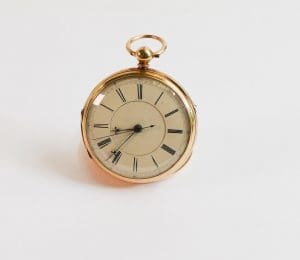
This 18ct gold chronograph pocket watch, bearing hallmarks for London 1873, was offered in our July Fine Art auction and sold for a fantastic hammer price of £1,500.
Pocket watches remain popular at auction, having found favour with watch collectors, as well as historical fashion enthusiasts. Their performance at auction is naturally dependant on factors such as age, quality and condition, however the right piece can gain interest enough to achieve prices ranging from hundreds to thousands of pounds. Truly exceptional watches can, of course, reach much higher.
How to Sell Pocket Watches at Auction
Looking at selling pocket watches at auction? Consign them to auction with Potteries Auctions, where our team of expert valuers can appraise your items and advise the best sale to put them in. We hold free valuation days every Tuesday at our Silverdale showroom. To book an in-person appointment, you can access the booking form here. Alternatively, you can email enquiries@potteriesauctions.com or call 01782 638100. We also provide valuations via WhatsApp – simply send clear photos of your items to 07864 667940.
